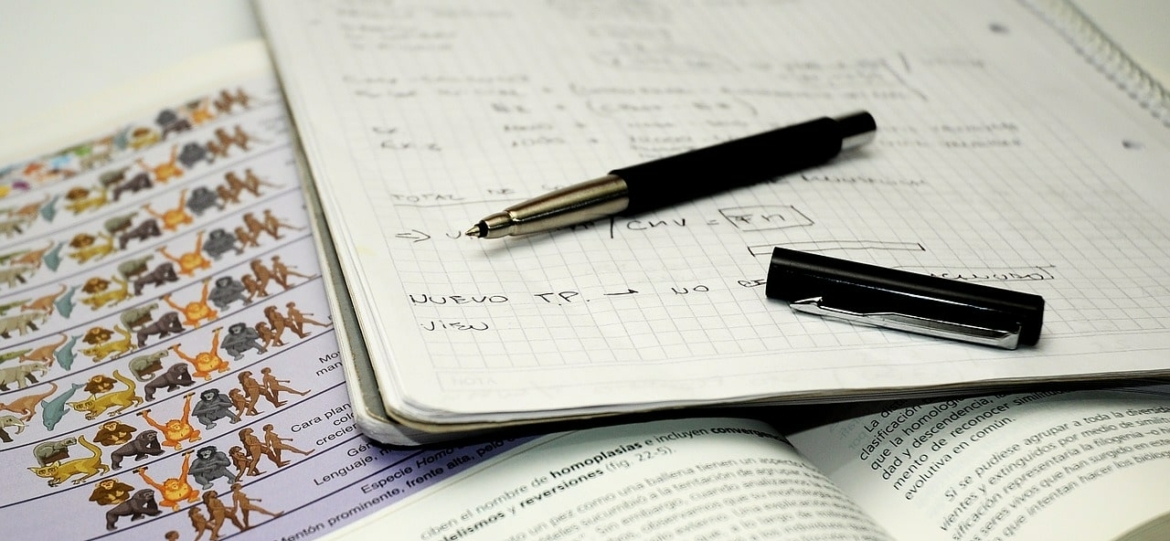En el examen CAE o C1 Advanced, que acredita el nivel C1 de inglés de aquellas personas que logran pasar el examen, van a evaluarnos de las cuatro destrezas que demuestran que sabemos comprender enunciados en distintos registros y contextos en inglés y a producir textos orales y escritos. En la primera parte de la prueba, llamada Reading and Use of English, nos enfrentaremos a distintos ejercicios, entre ellos el llamado multiple matching de la parte 8. En este artículo te contamos todo lo que debes saber sobre esta parte del examen. Además, conocerás:
- ¿En qué consiste el CAE Reading and Use of English part 8?
- Ejemplo del CAE Reading and Use of English part 8
- Tips para realizar este multiple matching
- Prepárate para el C1 Advanced con GlobalExam
¿Quieres prepararte para la parte 8 del CAE Use of English o C1 Advanced? ¿Sabes qué tipo de preguntas te harán? ¡Sigue leyendo para enterarte de todo!
¿En qué consiste el CAE Reading and Use of English part 8?
Antes de todo, no olvides que para aprobar un examen, lo que tienes que hacer son ejercicios, y nosotros te ponemos a disposición exámenes C1 Cambridge gratis para practicar.
La parte 8 es la llamada multiple matching o emparejamiento múltiple, donde deberemos leer cinco textos diferentes y responder a qué texto se refieren diez preguntas sobre los mismos. La idea de esta prueba es que demostremos que somos capaces de leer para averiguar información específica, actitudes, opiniones del texto, etc.
Ejemplo del CAE Reading and Use of English part 8
La mejor manera de que conozcas lo que vas a tener que hacer en esta prueba es ver ejemplos de la misma. A continuación, te ofrecemos un ejemplo que forma parte de las actividades que te proponemos en GlobalExam, con el enunciado, el texto y las preguntas correspondientes.
You are going to read an extract from a newspaper article in which five people talk about the books they most like to share with other people. For questions 1-10, choose from the books (A-E). The books may be chosen more than once.
What book do you most like to share with people?
Five people’s responses to the question of which of their favourite books they have shared with other people.
Book A
I often swap books with friends, but after lending a pristine copy of Jane Eyre to someone I really cared about, we had a bit of a falling out and stopped speaking to each other. That copy was very special to me so, after a few months, I contacted them about getting the book back and we had a huge argument where I compared him to the main character, for his loneliness, how isolated he’d become, and for his stubbornness to reach out to others. Anyway, he eventually did return the book but it was so dog-eared I told him to keep it. We did actually become friends again after all that.
Book B
I think I inadvertently got dozens of people reading The Lovely Bones when it first came out. I lent it to my best mate, who shared it with other friends. Realising I probably wasn’t going to get it back, I bought myself another copy. Which she also borrowed and lent out! She told me many of her friends started buying their own copies too. I’m not sure why it was so popular amongst the people we knew when it first came out but everyone seemed to love it and I seem to be continually buying and giving away copies. I think I’m on my seventh one now.
Book C
I have so many books to share, but the most recent one I lent to my brother was Albert Camus’s The Stranger, one of my favourite books in fact. The copy was very old and so I want it back at some point. I’m not really sure why it’s one of my favourites. The main character can be quite frustrating, but it does remind me a bit about growing up in Algeria myself where he studied this book. It doesn’t really remind me of any other books but it’s still one I can read again and again and which makes me yearn for my wonderful childhood.
Book D
Books definitely help to make us who we are. The Little Prince is the first book I remember being given. It was a birthday present from my aunt and I think I’ve read it at least once every year since. As a child I loved the sweetness of the main character and his adventures, but as I got older, I started to feel differently about him, and to understand the main themes differently. It’s definitely an important part of my life and I’ve shared it with many of my own family and friends, although my own copy is in a bit of a state now! Actually, I have rebought it, but I’ll never get rid of the first copy I was given.
Book E
I don’t remember how I got my copy of Maya Angelou’s I Know Why the Cage Bird Sings, but I’ve recommended it to everyone. I love autobiographical novels and this one revolutionised memoirs. It just did things a bit differently, with her blending of fact and fiction into a shocking and beautiful work, that was poetic and powerful. Her experiences were written candidly, beautifully, and from the heart and she paved the way for other women of colour to come forward and write their stories and so this work will always be seen as important, and as a must-read for everyone.

Preguntas:
1. Was originally a gift from a family member?
- Book A
- Book B
- Book C
- Book D
- Book E
2. Brings up feelings of nostalgia in the reader?
- Book A
- Book B
- Book C
- Book D
- Book E
3. Come back in a far worse state that it was lent out?
- Book A
- Book B
- Book C
- Book D
- Book E
4. Changed the way people saw the genre?
- Book A
- Book B
- Book C
- Book D
- Book E
5. Got read by many more people than expected?
- Book A
- Book B
- Book C
- Book D
- Book E
6. Is believed to have opened up many doors?
- Book A
- Book B
- Book C
- Book D
- Book E
7. Was shared with a relative?
- Book A
- Book B
- Book C
- Book D
- Book E
8. Got bought a second time and then also got lent out?
- Book A
- Book B
- Book C
- Book D
- Book E
9. Did the reader change her mind about as she got older?
- Book A
- Book B
- Book C
- Book D
- Book E
10. Is it about a character that won’t admit to needing help?
- Book A
- Book B
- Book C
- Book D
- Book E
Tips para esta parte del multiple matching
En esta parte de la prueba, será importante que sigas un plan de acción para asegurar que completes los ejercicios en el tiempo establecido y que, además, lo hagas de manera correcta. Debemos pensar que los enunciados de las preguntas ya nos están dando mucha información sobre los datos que debemos encontrar en los textos. Sigue los siguientes consejos y triunfarás en la actividad:
1. Analiza los enunciados de las preguntas
En el examen verás que las preguntas aparecen antes que los textos. Es imprescindible que leas antes las cuestiones para que cuando te adentres en la lectura de cada párrafo percibas ya datos de los que te han preguntado antes. De esta forma ahorrarás mucho tiempo.

2. Lee párrafo por párrafo los textos y encuentra la idea principal de cada uno
Una vez sepas cuáles son las preguntas a las que te enfrentas, al leer los textos debes tener presente qué idea es la que ofrece cada uno de ellos para empezar a relacionar cada uno con una de las preguntas, que será el siguiente paso.
3. Relaciona cada pregunta con cada párrafo subrayando o justificando mentalmente
Una vez has hecho la lectura, llega la hora de contestar y, para eso, siempre es recomendable que sepas por qué una es la respuesta correcta y no otra. Para eso, el mejor consejo es que subrayes en el papel o pienses mentalmente la justificación de tu respuesta.
Practica con GlobalExam
Como habrás ido observando a lo largo del artículo, conocer la prueba es importantísimo para hacer bien las actividades. Por eso, te proponemos que te prepares en línea con GlobalExam, una plataforma que tiene material específico y creado por especialistas para la prueba CAE. Dentro de todas las actividades, contamos con numerosas pruebas 8 del Reading and Use of English para que puedas practicar individualmente hasta que la controles a la perfección. Por si fuera poco, podrás ponerte a prueba en tiempo real con modelos de exámenes completos. ¿A qué esperas para comenzar tu preparación?
Consulta las otras partes del Reading and Use of English:



